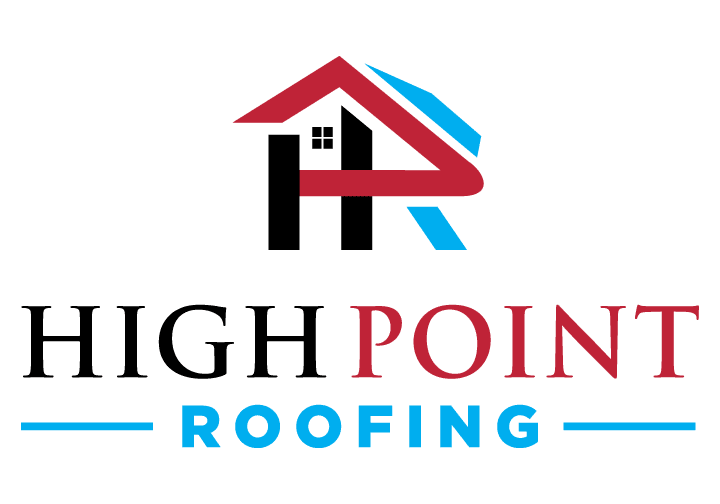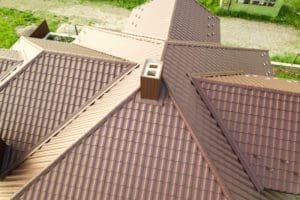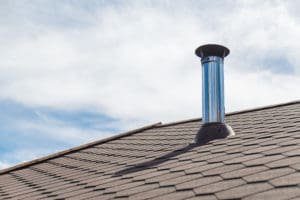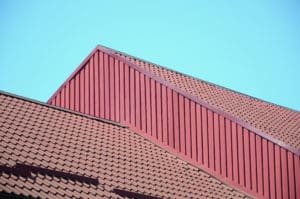Introduction to Modern Roofing
Roofs have come a long way from just being a layer of straw on top of our ancestors’ heads. Today, they’re not just about keeping water out and warmth in; they’re about being smart and energy-efficient. Let’s dive into modern roofing technology. It’s all about materials and methods that save energy, last longer, and even generate power. Think solar tiles that look like traditional shingles but produce electricity. Or cool roofing materials that reflect more sunlight, keeping buildings cooler and slashing air conditioning costs. And it’s not just about the materials. Today’s roofs can come with sensors to monitor health and alert you to issues before they turn into costly repairs. In short, the roofs over our heads are getting smarter, greener, and tougher. Welcome to the future of roofing, where it’s not just about cover, but about innovation.
The Evolution of Roofing Materials
Roofing materials have evolved significantly from the simple straw and wood shingles of ancient times. Today, we have a wide range of options that are not only about keeping the rain out but also improving energy efficiency, durability, and even aesthetics. Let’s walk through some key materials that mark the evolution of roofing. First off, the classic asphalt shingles, a staple for modern homes, affordable and easy to install, but they haven’t always been around. Metal roofing, once mainly seen on barns or commercial buildings, has surged in popularity for homes, thanks to its long life span and its ability to reflect solar heat. Then there’s rubber roofing, often used on flat roofs, known for its resistance to extreme weather and effective waterproofing. Solar tiles have sparked a revolution by integrating solar technology directly into roofing materials, allowing homeowners to generate electricity while protecting their homes. Lastly, the rise of green roofs shows a shift towards eco-friendly solutions, with layers of soil and plants acting as natural insulators. Each of these materials reflects a step towards innovation, driven by the need for more efficient, sustainable, and versatile roofing solutions.
Green Roofing: Sustainable and Eco-Friendly Options
Green roofing stands out in the push for more sustainable living practices. This eco-friendly option doesn’t just look good; it also plays a vital role in reducing the urban heat island effect, managing stormwater, and increasing biodiversity in cities. Basically, green roofs are made by adding a layer of vegetation over a waterproof membrane on your roof. This layer acts as insulation, keeping buildings cooler in summer and warmer in winter, which can lead to lower energy costs. There are two main types of green roofs: intensive and extensive. Intensive roofs are like gardens in the sky, with deeper soil that can support a wide variety of plants, even trees. They need more maintenance but offer more benefits in terms of usability and biodiversity. Extensive roofs have a thinner layer of soil and are designed to be low maintenance, often planted with hardy sedums that can thrive in harsh roof conditions. While the upfront cost of installing a green roof can be higher compared to traditional roofing materials, the long-term savings in energy costs and the extended lifespan of the roof itself often offset these initial investments. Plus, they add a unique aesthetic to buildings and can even increase a property’s value. So, when you’re considering your next roofing option, think about going green. Not only will it benefit the planet, but it might just be kinder to your wallet in the long run too.
Solar Roofs: Harnessing the Power of the Sun
Solar roofs are changing the game in home energy. Think of them as power plants on your roof, but way cooler. These aren’t your typical solar panels. They blend in, looking just like regular shingles while soaking up sunlight. The cool part? They turn that sunlight into electricity you can use to power your home. This means lower electric bills and a big thumbs up for the planet.
The cost? It’s not peanuts, but think about the long game. Installing solar roofs does require a bit upfront, but the savings on energy bills over time and potential government incentives make it a smart move. Plus, they’re tough and can last longer than traditional roofs, giving you less to fuss about.
And it’s not just about saving money. By going solar, you’re cutting down on greenhouse gases, fighting climate change from your living room. So, solar roofs aren’t just about looking to the future; they’re about making a better one.
Cool Roofs: Reflecting Heat and Saving Energy
Cool roofs are not your average rooftops. They’re designed to reflect more sunlight and absorb less heat than a standard roof. Think of them like wearing a white t-shirt on a sunny day versus a black one. The white t-shirt keeps you cooler, right? That’s basically what cool roofs do for buildings. This technology is especially useful in hot climates where air conditioning costs can skyrocket during the summer months. By reflecting sunlight, cool roofs help keep buildings cooler naturally, which means less reliance on air conditioning. This not only saves energy but also cuts down on electricity bills. In simple terms, installing a cool roof is like giving your building a pair of sunglasses. It protects and keeps it cool. Plus, by reducing energy use, cool roofs also help in the fight against global warming. So, it’s a win-win for both your pocket and the planet.
Smart Roofing: Integration of Technology for Better Performance
Smart roofing is reshaping how we think about our homes’ tops. This isn’t just about slapping some solar panels up there anymore. We’re talking about high-tech roofs that monitor, adapt, and react to the environment to save energy, cut costs, and even repair themselves. Imagine a roof that tells you when it’s damaged or collects solar power more efficiently on sunny days. These roofs come packed with sensors and gadgets that do all that and more. They’re made from advanced materials, like special shingles that can change color to reflect or absorb heat, keeping your house cooler in summer and warmer in winter. And solar tiles? They now blend in so well with traditional roofing materials that you might not even notice them at first glance, but they’re working hard to power your home. It’s all about roofs that do more with less and turn your home into a smart, energy-efficient fortress. With these innovations, your roof isn’t just a roof anymore—it’s part of your home’s brain.
Durable and Lightweight Materials for Modern Roofing
Today’s roofing is not just about covering the top of a house; it’s about adding value, beauty, and resilience against the elements. The industry’s push towards innovation has brought us materials that are both durable and lightweight. Metal roofs are a prime example, known for their longevity, with a life expectancy of up to 50 years. They resist high winds, won’t corrode or crack, and could even increase your home’s resale value. Then there’s synthetic roofing, made from rubber and plastic. This option is gaining traction for its ability to mimic high-end materials like slate and wood shakes without their associated weight and maintenance issues. Synthetic roofs are tough; they’re engineered to be impact resistant and can last from 40 to 50 years. The beauty here lies not just in the materials’ durability but in their lightweight nature. Less weight means less strain on your home’s structure and the possibility to install without needing to beef up your home’s support system. Plus, being lightweight often contributes to easier, quicker, and therefore, cheaper installation. Whether you opt for metal or synthetic, modern roofing materials offer a smart blend of strength and lightness, ticking both aesthetic and practical boxes.
Roofing Insulation and Energy Efficiency Trends
Efficiency is the name of the game with modern roofing technology, especially when it comes to insulation. Gone are the days of leaky roofs and sky-high energy bills. Today, the focus is firmly on materials that keep your home warm in winter and cool in summer, reducing the need for heating and air conditioning. This is not just good for your pocket but the planet too. Most modern insulation materials are designed to be eco-friendly, cutting down on energy use and carbon emissions. Materials like cool roofing, which reflects more sunlight and absorbs less heat, are gaining traction. This means less need for air conditioning on hot days.
Another trend is the use of green roofs, covered with plants, which improve air quality and provide natural insulation. These roofs are not just about saving energy; they’re also about creating a healthier environment for everyone. The push towards sustainable and energy-efficient roofing solutions is not slowing down. With advancements in materials science, we can expect even more innovations that will make our roofs smarter, more efficient, and kinder to our planet. Remember, investing in a good quality, energy-efficient roof now could save you a lot on energy bills down the line. It’s a win-win for you and the environment.
The Impact of Modern Roofing on Home Valuation
Modern roofing isn’t just about covering your home; it’s a smart investment that boosts your home’s value. Think of it as not just a cap for your house but as armor that makes your property more attractive to buyers. Why? Because today’s roofing materials last longer, look better, and come with benefits that old roofs can’t touch. Energy efficiency is a big deal. Roofs with cool roofing technology can reflect more sunlight, keeping your home cooler and slashing energy bills. This is a selling point that gets buyers’ attention. Durability is another factor. Materials like metal or high-quality asphalt shingles can withstand fierce storms, reducing the need for repairs or replacements. This durability means less hassle for future homeowners, making your house a more appealing buy.
The aesthetic appeal can’t be ignored either. Modern roofing materials come in a variety of colors and styles, allowing for customization that enhances curb appeal. A beautiful home from the outside can significantly increase its market value.
What’s the bottom line? Investing in modern roofing technology can directly impact your home’s valuation in the market. It’s not just a roof; it’s a smart financial decision that can pay off when it’s time to sell your house.
The Future of Modern Roofing: What’s Next?
Roofing technology is always advancing, making roofs more durable, energy-efficient, and smarter. Looking ahead, we can expect to see materials that heal themselves and roofs that generate electricity. Self-healing roofs might sound like science fiction, but researchers are working on materials that fix their cracks, significantly reducing maintenance needs. Solar tiles are another big thing, blending with your roof’s design while powering your home. This means lower electricity bills and a smaller carbon footprint. Imagine a roof that warns you about damage or leaks before they become a problem. That’s where smart roofing comes in, with sensors to monitor health in real time. The future of roofing is not just about covering your home; it’s about making roofs that work for you, saving money, and protecting the environment.






